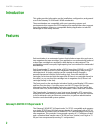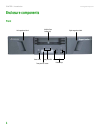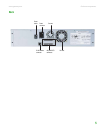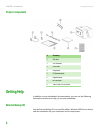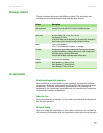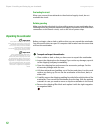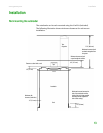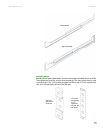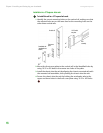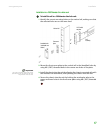
Chapter 2: Installing and Setting Up your Autoloader www.gateway.com
10
Overview
Preparation
1 Prepare to install your new E-824R or E-826R (see “Preparation” on
page 10).
2 Identifying the correct SCSI bus types (see “SCSI bus requirements” on
page 10).
Installation
1 Install the autoloader in a computer rack. (see “Rack mounting the
autoloader” on page 13
).
2
Connect the autoloader to the server. (see “Connecting the SCSI and
power cables” on page 20).
3 Set the SCSI ID for the autoloader (see “Setting the SCSI ID” on page 25).
4 Turn on the autoloader on to make sure that it passes the Power-on Self
Test (POST ).
Caution
Whenever you power cycle the
autoloader, allow 10 seconds before
turning the power back on. The power
supply requires at least two to three
seconds for the capacitors to discharge.
This ensures a complete system reset on
power down and may avoid system
errors.
Setup and configuration
Set up the host and make sure that the connection is correct (see “Preparing
the host and making sure the connection is correct” on page 22).
Preparation
Before you install your new Gateway autoloader, unpack it carefully and inspect
it for any damage that might have occurred during shipping.
Make sure that the work area is free from conditions that could cause
electrostatic discharge (ESD). Discharge static electricity from your body by
touching a known grounded surface, such as your computer's metal chassis.
SCSI bus requirements
You must connect the autoloader to one of the following SCSI bus types:
Important
The autoloader is not compatible with a
High-voltage Differential (HVD) SCSI bus.
■ Ultra 160 SCSI-3, LVD/MSE SCSI bus
■ Ultra 320 SCSI-3, LVD/MSE SCSI bus
Important
The maximum number of autoloaders
supported per SCSI bus is two.
Your SCSI host adaptor card must also support the SCSI bus type used to
connect the autoloader.



